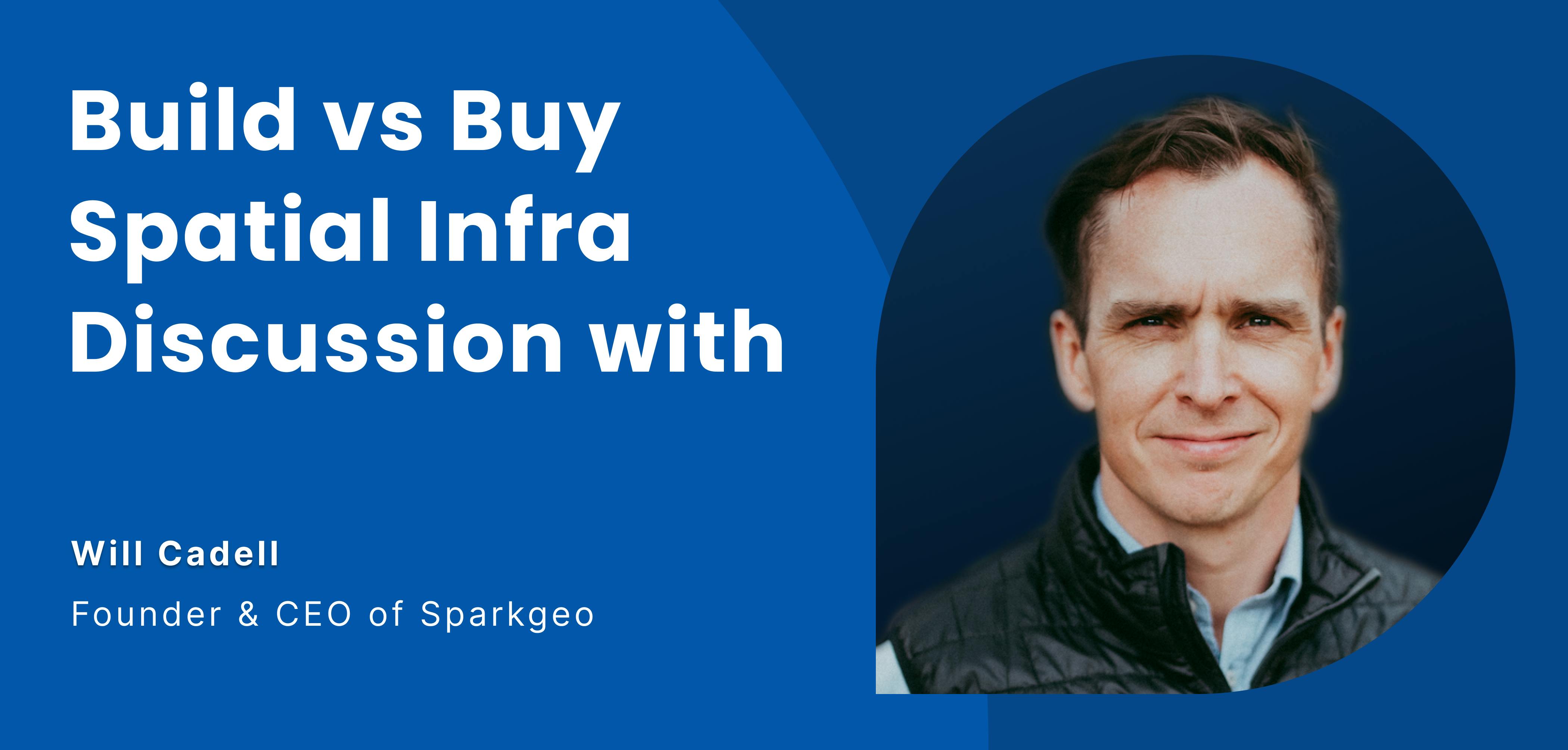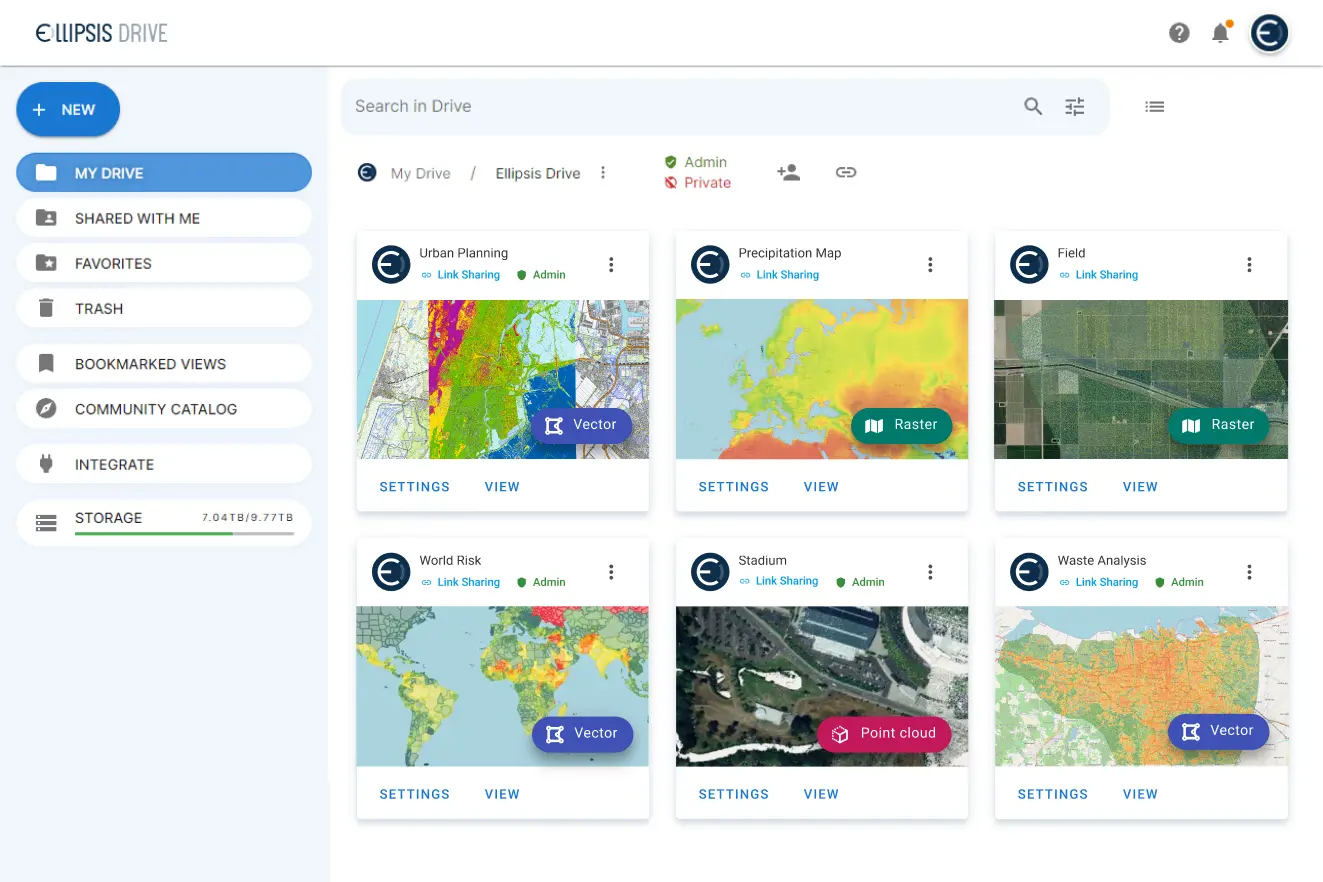Expert's Opinion
The Real Cost of Building Geospatial Infrastructure Ft. Will Cadell, CEO Sparkgeo

Contents
Introduction
In a recent episode of the Ellipsis Drive podcast, we had the privilege of speaking with Will Cadell, CEO of Sparkgeo, a seasoned geospatial expert who has experienced both sides of the infrastructure equation i.e. building tools in-house and leveraging existing platforms. His perspective is particularly valuable for organizations grappling with the ever persistent challenge: should you build your geospatial infrastructure or buy it?
This isn’t just a technical question, it’s a strategic one. As Will explains, every decision carries hidden costs, from maintenance and scaling to staffing and integration. In this post, we unpack these insights and explore where the true cost of ‘building’ truly lies.
Where are you on the Spectrum?
Not all organizations approach geospatial infrastructure the same way, and as Will pointed out, each sits somewhere along a buy vs build spectrum. On one end, some companies want full ownership of their intellectual property and control over every technical detail: "There is a very obvious case for certain companies…who want to build from scratch because they want to own the IP."
On the other hand, some organizations simply want to execute workflows efficiently. For them, leveraging off-the-shelf solutions saves time and reduces risk. "Buying something off the shelf can often make the most sense because you get the workflow and the maintenance package,” said Will. “It just makes sense."
In between lies a hybrid approach, where companies may integrate purchased platforms with custom-built components to fit unique workflows.
Risks and Hidden Costs of Building
Building your own geospatial infrastructure can seem attractive: full control, custom workflows, and intellectual property all under your roof. But as Will emphasized, this reality comes with hidden costs and continuous responsibilities: "Once you build something that lives on the internet, that thing has a life of its own. Certain activities need to happen around it to keep it updated, secure, and compatible with evolving web standards. It’s a constant effort."
Even with a skilled team, maintenance is never a one-off task. Missed updates can disrupt workflows, while reliance on individual developers can create single points of failure: "We’ve had clients come to us because something was built by an independent developer and now they don’t know how it works. The person isn’t around anymore."
In short, building in-house (or having something custom-built by a contractor) can offer freedom, but it carries both operational and long-term risk that organizations must carefully weigh.
Buying Off-The-Shelf: Simplicity vs Flexibility
Purchasing (usually licensing) a ready-made geospatial solution often seems safer; you get tested software, support, and maintenance as part of the services package (usually). But it’s not always a one-size-fits-all answer. Off-the-shelf tools can be restrictive when your workflows are slightly unconventional or require integration with legacy data and tools. Yes, ‘buying’ simplifies management and reduces risk. But organizations must be cognizant of the flexibility and interoperability of the third-party solution. It needs to properly adapt to the organization’s unique (and ever changing) workflows. It’s a non-negotiable.
The Best of Both Worlds
For many organizations, a middle path between building and buying, the hybrid approach, offers the right balance of control, flexibility, and risk management. This is where service providers like Sparkgeo come in, delivering custom geospatial solutions while leveraging existing technologies where it makes sense. "Our value is in delivering the solution to the customer,” said Will. “I have no interest in reinventing wheels. When it makes sense, we bring in products for those customers."
The hybrid model allows organizations to meet their unique requirements without taking on the full maintenance burden. By combining off-the-shelf components with bespoke development, hybrid approaches can maximize both efficiency and customization.
Key Mistakes to Avoid
While treading this path, there are a few all too common mistakes that need to be avoided. Having worked on several use cases over the years, Will is in a prime position to share some of these pitfalls -
Underestimating project management needs: Many organizations assume engineering talent alone is enough, but execution is equally critical. "People come to us and say, 'We want to use your engineering expertise, but we don’t need a project manager.' And we’re like, 'You definitely do.' Project management is an undervalued skill."
Relying solely on independent developers: Smaller teams or freelancers can be cost-effective but carry risks if knowledge isn’t transferred. "We’ve had to reverse engineer code from independent developers because they were no longer around, and the product didn’t come with the keys to maintain it. It’s a nightmare for everyone involved."
Underestimating data requirements: Data availability and cost can be unpredictable, especially for higher-resolution or specialized datasets. "A lot of data is available, but it probably doesn’t match your budget."
Neglecting maintenance and lifecycle considerations: Custom-built tools require continuous updates to stay functional and secure. Without proper planning, they can become liabilities.
"If you build something yourself, there is a constant need to keep it updated."
Conclusion
The buy-versus-build dilemma isn’t binary. As Will Cadell emphasizes, the right choice depends on organizational needs, technical expertise, and budget: sometimes off-the-shelf solutions make the most sense; other times, bespoke development or a hybrid approach is essential. The key is understanding your position on the spectrum, assessing risk, and investing in execution and project management. By learning from common pitfalls and leveraging both existing tools and expert services, organizations can design spatial infrastructures that are efficient, scalable, and resilient. Ultimately, that means putting their geospatial data to meaningful work.
We’d like to thank Will for taking the time to share his valuable insights with the geospatial community. You can also watch the full podcast episode here. Thank you for reading!
Liked what you read?

Subscribe to our monthly newsletter to receive the latest blogs, news and updates.
Take the Ellipsis Drive tour
in less than 2 minutes'
- A step-by-step guide on how to activate your geospatial data
- Become familiar with our user-friendly interface & design
- View your data integration options
